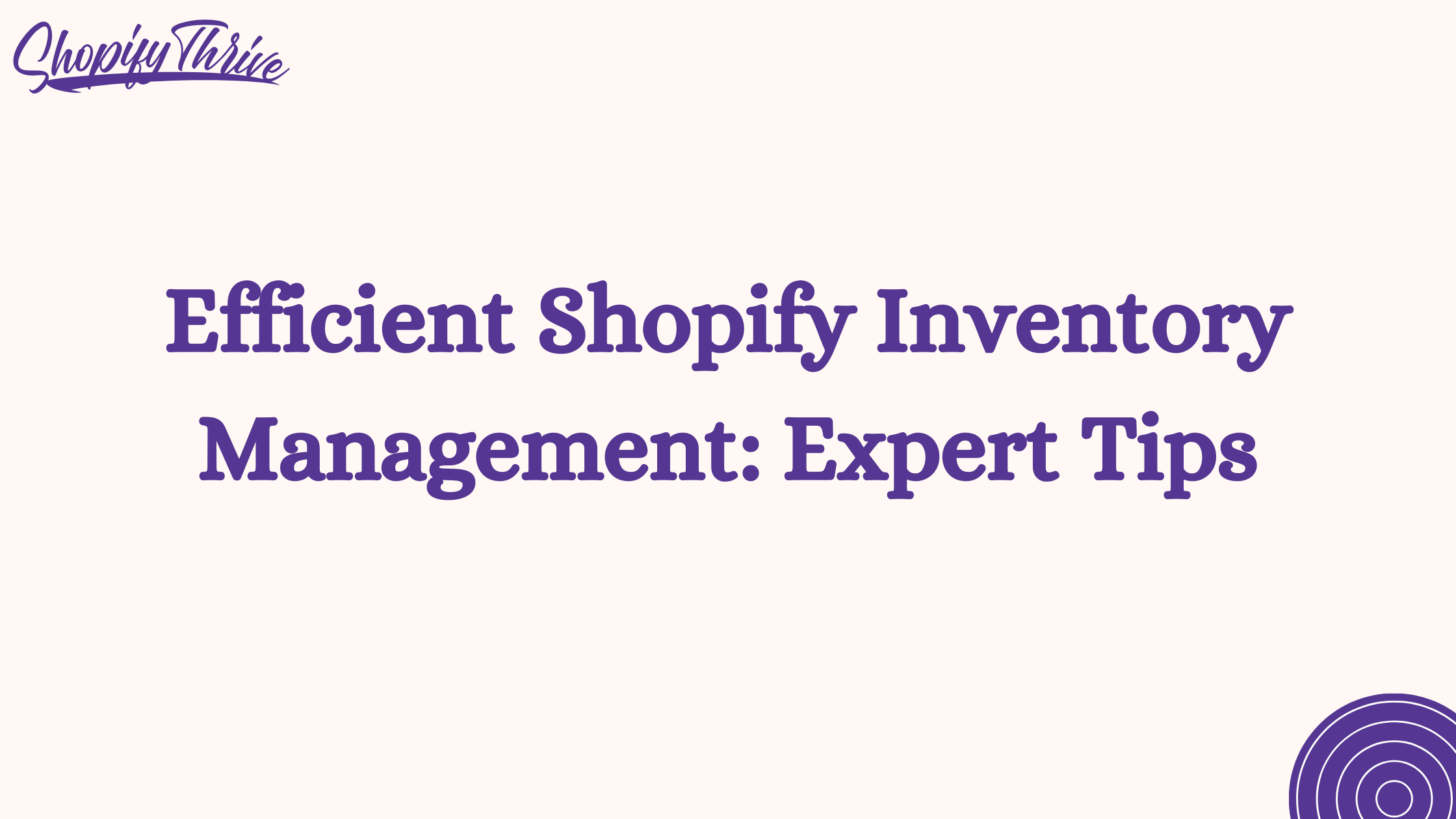
Noor
Efficient Shopify Inventory Management: Expert Tips
- August 7, 2023
- , 6:36 pm
- , Shopify Tips
Introduction
Efficient Shopify inventory Management is a cornerstone of running a successful e-commerce business. Proper inventory management ensures that products are available when customers want them, reduces the risk of stockouts, and maximizes your revenue potential. In this comprehensive guide, we’ll unveil a series of expert strategies to help you effectively manage your Shopify inventory and optimize your store’s performance.
The Vital Role of Inventory Management in E-Commerce
Inventory management goes beyond simply tracking products; it’s about striking the right balance between supply and demand. Here’s why effective inventory management matters:
- Optimal Stock Levels: Maintaining the right amount of inventory prevents overstocking and stockouts, minimizing carrying costs and lost sales.
- Customer Satisfaction: Accurate inventory levels ensure that customers can purchase their desired products without delays or cancellations.
- Cost Efficiency: Efficient inventory management reduces storage costs, wastage, and the need for emergency orders.
The MECE Framework for Shopify Inventory Management
Let’s explore the step-by-step process of mastering Shopify inventory management using the MECE framework:
1. Accurate Tracking and Categorization
- Implement a reliable inventory tracking system that records product inflows and outflows.
- Categorize products based on attributes like size, color, and type for organized management.
2. Demand Forecasting
- Analyze historical sales data to predict future demand patterns.
- Consider external factors such as seasons, holidays, and market trends when forecasting demand.
3. Safety Stock and Reorder Points
- Set safety stock levels to mitigate unexpected fluctuations in demand or supply.
- Determine reorder points to trigger replenishment orders before stock levels reach critical levels.
4. Supplier Relationship Management
- Cultivate strong relationships with suppliers to ensure timely deliveries and reliable inventory restocking.
- Consider using multiple suppliers to diversify your sources and reduce supply chain risks.
5. Inventory Optimization Techniques
- Implement inventory turnover ratios to assess the efficiency of your inventory management.
- Embrace techniques like the Economic Order Quantity (EOQ) model to determine optimal order quantities.
6. Technology and Automation
- Utilize inventory management software that offers real-time tracking, demand forecasting, and automated replenishment alerts.
- Integrate your inventory management system with your Shopify store for seamless updates.
The Benefits of Effective Shopify Inventory Management
Implementing robust inventory management strategies can yield numerous benefits for your Shopify store:
- Optimized Cash Flow: Efficient inventory management prevents excess tying up of capital in unsold products.
- Enhanced Customer Experience: Accurate inventory levels prevent stockouts and improve customer satisfaction.
- Reduced Holding Costs: Proper inventory management minimizes storage costs and wastage.
- Data-Driven Decisions: Inventory data insights empower you to make informed decisions and streamline operations.
Conclusion
Mastering Shopify inventory management is essential for sustained e-commerce success. By following the MECE framework and implementing accurate tracking, demand forecasting, safety stock strategies, and leveraging technology, you can strike the perfect balance between supply and demand. Effective inventory management not only boosts customer satisfaction but also contributes to cost efficiency and streamlined operations. Embrace the art of inventory optimization, harness the power of technology, and position your Shopify store for long-term growth, profitability, and customer loyalty in the dynamic world of online commerce.
If you enjoyed this blog post, make sure to check out some of our other useful Shopify tips here: Shopify Tips Archives | Shopify Thrive
Ready to transform and grow your shopify brand?
See why companies like Lash Artisan, Lust For Lashes, joemetry.co and more
launched their shopify Brand With ShopifyThrive.
